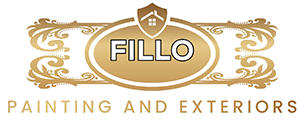Painting the exterior of your home or business can be a tricky endeavor, even if you plan on contracting the work out to a painting company in Alpharetta. There are still many decisions you must make to guarantee that you’ll be satisfied with the final product once the paint dries. While paint color is the first decision to make, the next step is deciding whether to use flat vs satin exterior paint. Whether you plan to do the painting yourself or hire exterior painters in Alpharetta to apply your paint, this blog will help you understand some of the differences between satin and flat paint.
Paint sheen, also known as paint finish, describes the glossiness or flatness of the paint once it dries. Paint sheens can range from flat to high gloss, and each sheen can be found in a variety of colors. However, for exterior painting, the two most commonly used finishes are flat and satin. Flat sheen has no gloss, and satin sheen is a low gloss finish that has more shine than flat paint. Which paint should you use for your next paint project? Keep reading to learn which sheen is best for your exterior painting job.
When to Use Flat Sheen for Your Exterior Paint
Flat paints are currently popular for use in outdoor applications, as they roll on smooth and provide a velvety finish that conceals imperfections, nicks, and other defects. It provides a soft, sophisticated look whether rolled or brushed on, and its non-reflective surface provides a rich, deep finish. Flat finish paint is easy for anyone to apply, as its forgiving texture masks application issues like poor brush strokes and roller lap marks. Because it can hide imperfections, it’s a good finish to use on older surfaces that you don’t yet want to refinish. Because it is somewhat soft and chalky to the touch, it’s easy to apply additional coats once the first coat dries. Subsequent coats of flat finish paint adhere to previous coats well, which means that touch-ups are quick and simple.
However, there are drawbacks to using flat finish paints on exterior surfaces. While they may look great initially, they are nearly impossible to clean. Therefore, it’s not advisable to use flat finish exterior paint on any surface that is regularly splashed by rainstorms or located in damp, shaded areas of the structure where algae and mildew may easily grow. If you do elect to use flat paint in those locations, there will be no way to routinely clean the surfaces without damaging the paint. Therefore, you should purchase extra cans of the paint in the same color for touch-ups and additional coats in the future.
When to Use Satin Sheen for Your Exterior Paint
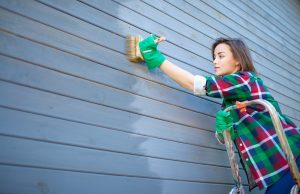 Satin finish paints, while not glossy, do have more of a sheen than flat finish paints. Because of the extra shine, satin sheen paints are perfect when you plan to use bright, vivid colors on your home exterior. The satin sheen will reflect light and make the colors pop. Likewise, the added reflectiveness also means that satin finish is not as good at hiding surface imperfections as flat finish is. Also, satin sheen paints are not as forgiving when it comes to mistakes in application such as improper brushstrokes, clumsy touch-ups, and overlaps. Those mistakes will show through satin finishes and are difficult to mask. However, despite the unforgiving nature of satin finish paint when it comes to imperfections, satin finish is far easier to clean than flat finish paints. It can be wiped or brushed down, which means things like mud and algae can be removed without having to repaint. That is helpful if your home is shaded year-round by large trees which can lead to excess moisture and algae growth. Because of its ease of cleaning, many professional painters will opt for satin finish paints when painting the exterior of homes and buildings.
Satin finish paints, while not glossy, do have more of a sheen than flat finish paints. Because of the extra shine, satin sheen paints are perfect when you plan to use bright, vivid colors on your home exterior. The satin sheen will reflect light and make the colors pop. Likewise, the added reflectiveness also means that satin finish is not as good at hiding surface imperfections as flat finish is. Also, satin sheen paints are not as forgiving when it comes to mistakes in application such as improper brushstrokes, clumsy touch-ups, and overlaps. Those mistakes will show through satin finishes and are difficult to mask. However, despite the unforgiving nature of satin finish paint when it comes to imperfections, satin finish is far easier to clean than flat finish paints. It can be wiped or brushed down, which means things like mud and algae can be removed without having to repaint. That is helpful if your home is shaded year-round by large trees which can lead to excess moisture and algae growth. Because of its ease of cleaning, many professional painters will opt for satin finish paints when painting the exterior of homes and buildings.
While both satin and flat finishes can be used outdoors, each paint sheen has its own set of pros and cons. To learn more about when to use flat vs satin exterior paint on your home or business, visit Fillo Painting at https://fillopainting.com/house-painters-in-alpharetta-ga/.
Related Posts
Paint Your Way to the Perfect Holiday Home
October is here, and you know what that means: the holiday countdown has officially begun! If you plan on hosting family and friends this year or simply want a refreshed, cozy atmosphere for yourself, now is the final, crucial window to complete those high-impact...
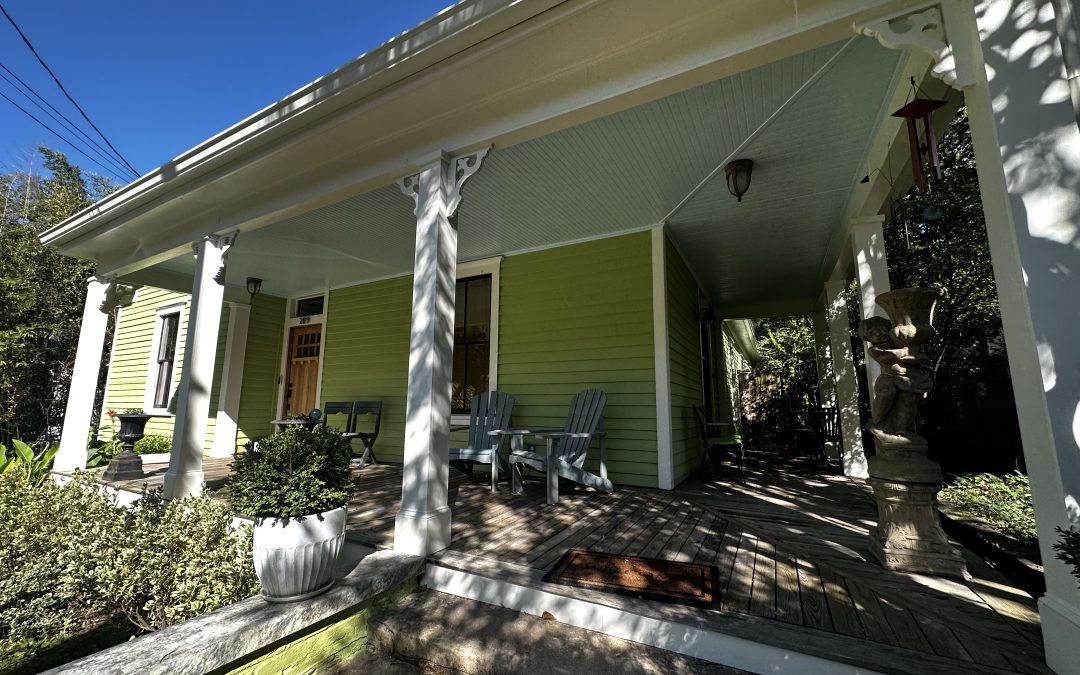
Pollen and Paint: Painting Your Home Beautifully This Spring
Spring is a fantastic time to refresh your home with a new coat of paint, but pollen and paint can be a major hurdle. Don't let those yellow clouds deter you! With a little planning and the right techniques, you can achieve a stunning finish while minimizing pollen's...
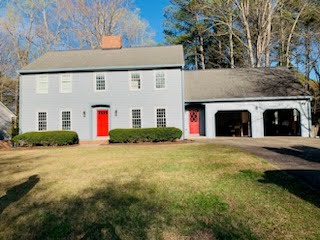
Painting Over Stained Wood: Is it Possible?
Painting over stained wood is a popular way to update the look of cabinets, furniture, and trim. But is it possible to achieve a professional-looking result? Absolutely! While it requires a bit more preparation than painting bare wood, with the right approach, you can...
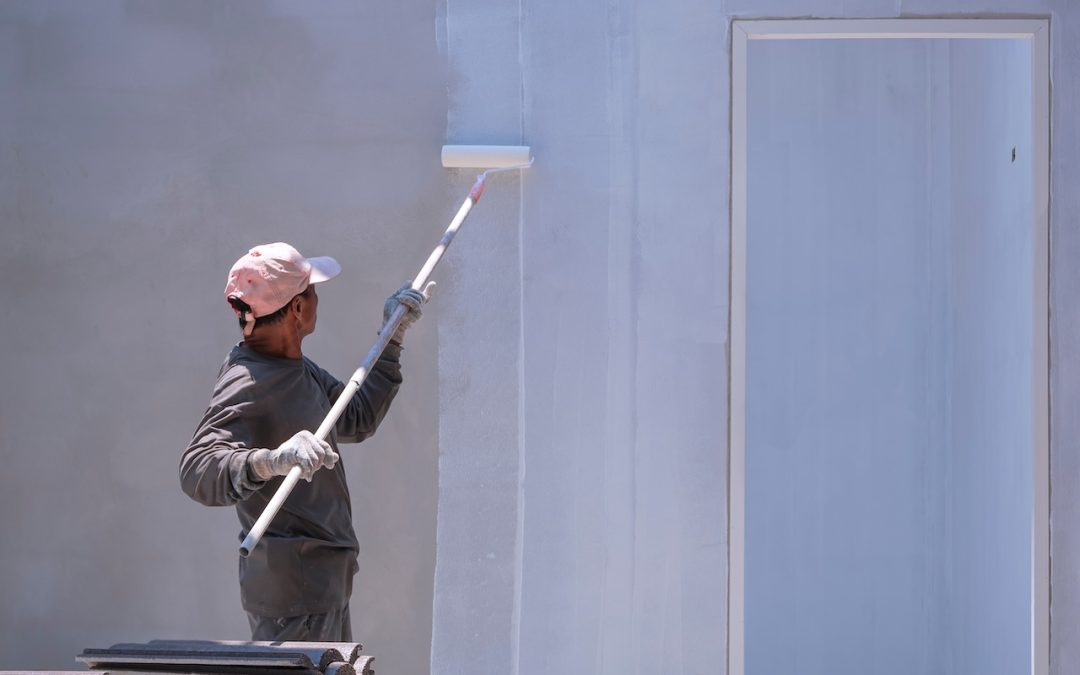
Painting in the Winter: A Guide for Homeowners
Many homeowners mistakenly believe that painting in the winter is impossible. While it's true that cold temperatures and inclement weather can present challenges, the reality is that any season can bring unpredictable conditions that can impact painting. The key lies...
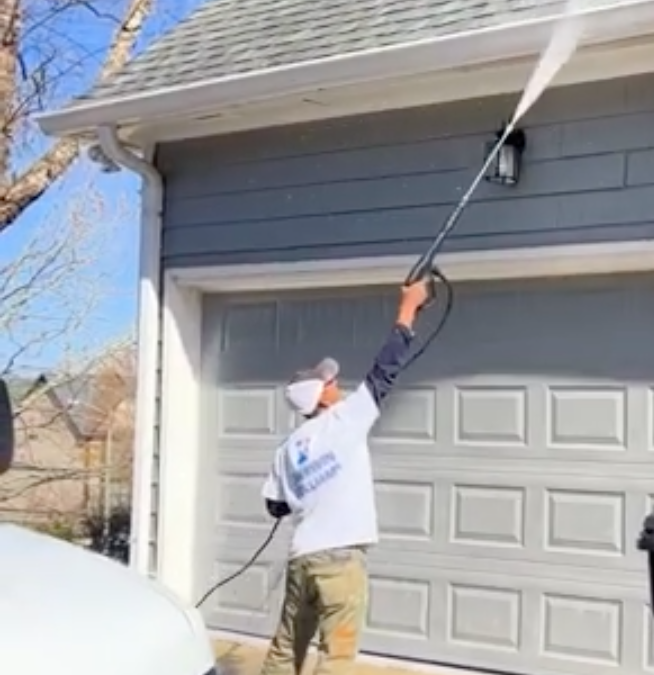
Exterior Home Painting Preparation
Exterior Home Painting Preparation is crucial for a successful and long-lasting finish. This guide will help you navigate the key steps and ensure a smooth and beautiful transformation for your home's exterior. 1. Assess Your Current Exterior Inspect for Damage:...
